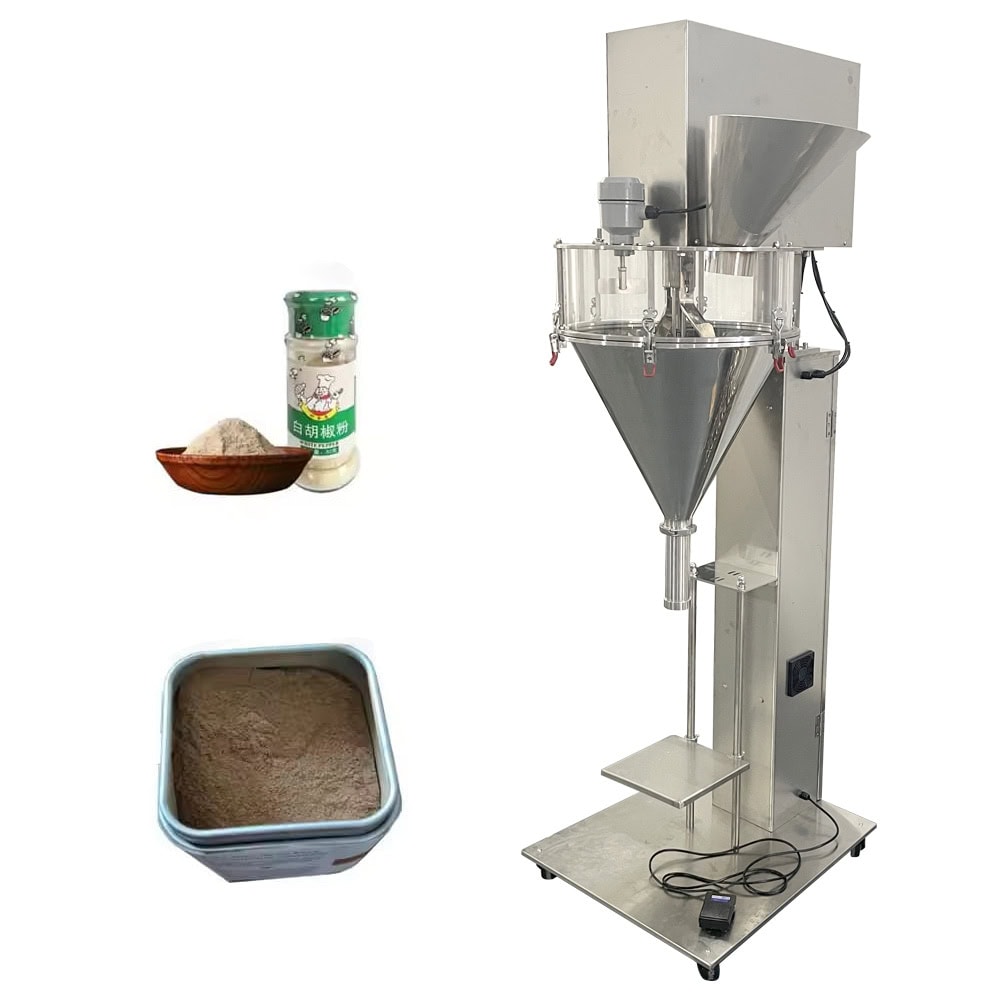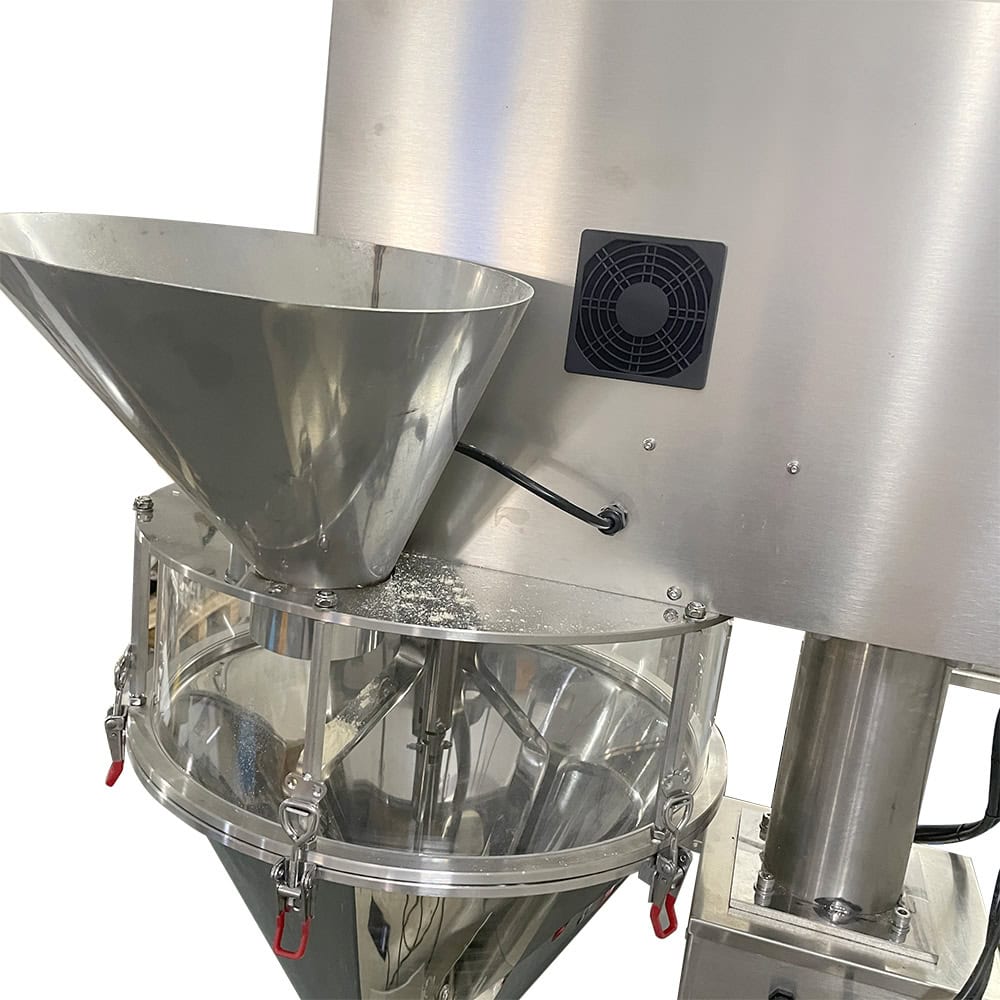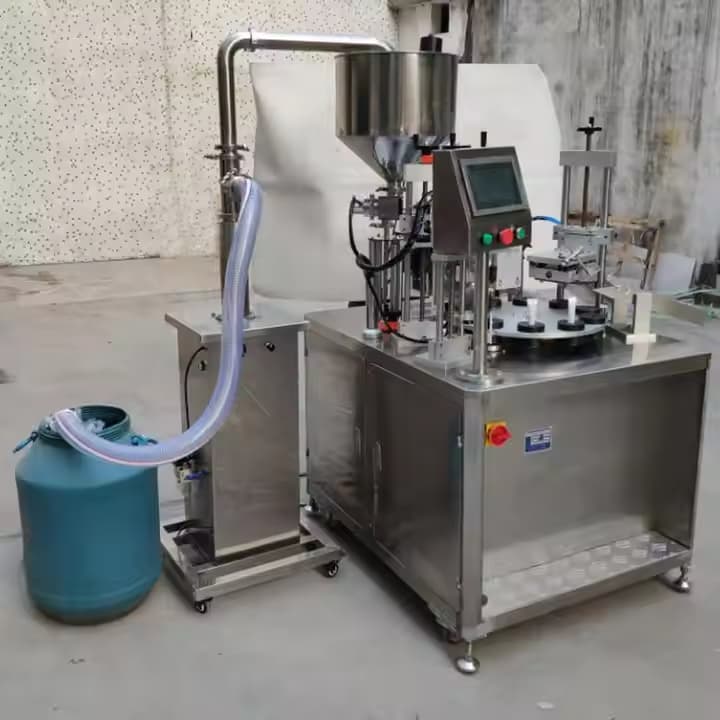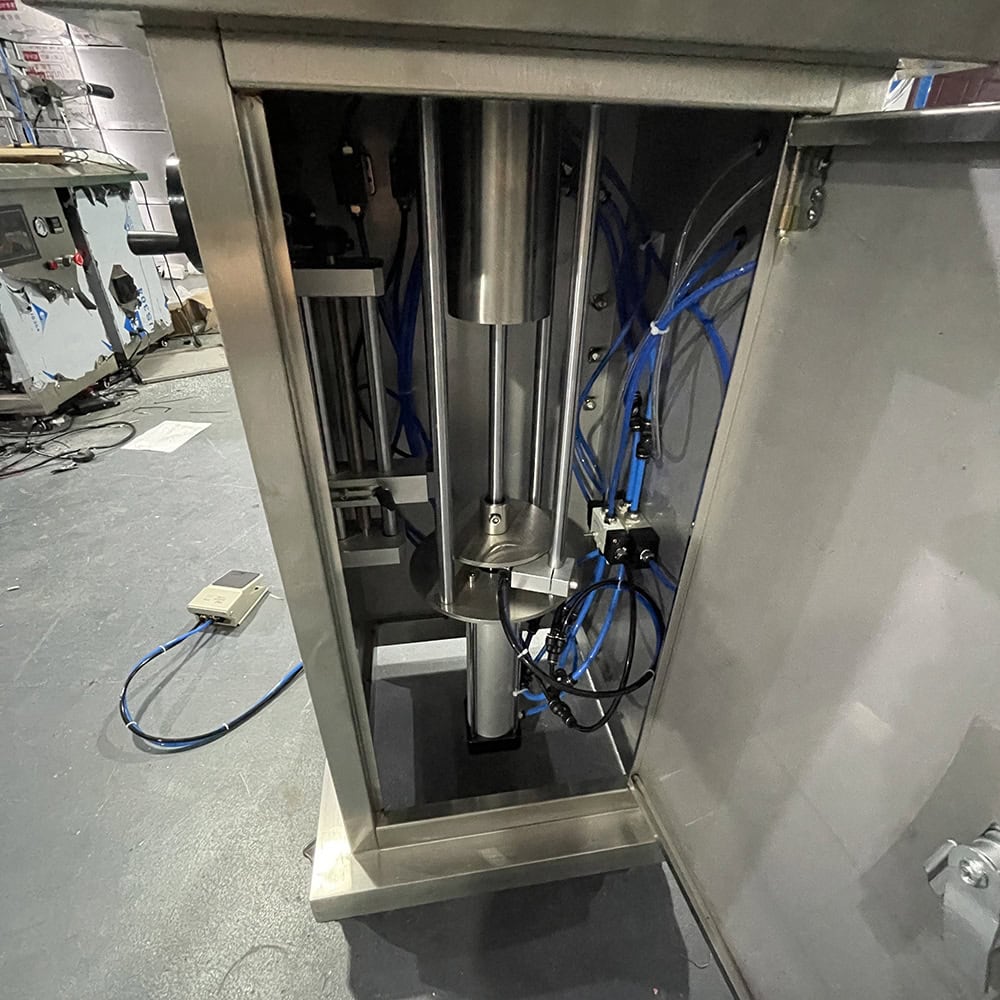Manual packaging can lead to operational inefficiencies, increased costs, and significant labor demands. Automatic vertical packing machines provide a solution by streamlining the packaging process, increasing speed, and reducing human error.
An automatic vertical packing machine is a high-speed, automated device that forms, fills, and seals packages in a vertical orientation. Suitable for powders, liquids, and granules, these machines offer efficiency, accuracy, and reduced labor, ideal for industries like food, pharmaceuticals, and cosmetics.
Automatic vertical packing machines meet the diverse demands of industries looking to optimize production with high precision.

What Is an Automatic Vertical Packing Machine?
An automatic vertical packing machine is a versatile, high-efficiency device designed to automate the packaging process by handling the tasks of bag forming, filling, and sealing in a continuous, upright cycle. Widely used for items such as powders, granules, and liquids, vertical packing machines offer quick and consistent packaging with minimal manual handling.
The vertical packaging process typically starts with film unwinding and forming the bag, followed by filling the bag with the product and sealing it at the top. The automatic nature of these machines reduces labor while ensuring precision, making them ideal for bulk production in food and pharmaceutical industries.
How Does an Automatic Vertical Packing Machine Work?
Vertical packing machines operate in a coordinated process, usually involving five primary steps. First, the machine unwinds film from a roll and forms a vertical bag. Next, products like granules, powders, or liquids are dispensed into the bag via the machine’s filling system. Once filled, the machine seals the bag and cuts it from the roll, producing a finished product package ready for distribution.
This process allows for continuous, efficient operation, enhancing output and reducing downtime. Automatic adjustments for size and content flexibility also make these machines adaptable to various packaging demands, such as for powder packaging machine.

Key Components of a Vertical Packing Machine
Automatic vertical packing machines consist of several critical components. These typically include a film unwinder, bag former, filler, and sealer. The film unwinder dispenses the packaging film, which is formed into a tube by the bag former. Products are then added via the filler, and the sealer closes the package, preventing leakage.
The film roller, multihead weigher, and dosing system further ensure accurate filling and quality control. Depending on the type of product, additional components like a bottle capping machine or barcode printer can be integrated to improve functionality and product tracking.
Common Applications of Vertical Packing Machines
Vertical packing machines are used across multiple industries, particularly where precise, high-volume packaging is essential. These machines pack items like coffee, sugar, snacks, pharmaceuticals, and even liquid products, reducing manual effort and production times.
In industries such as food, pharmaceuticals, and cosmetics, vertical packing machines are invaluable for managing bulk packaging needs. With advanced automation, companies can package consistent, high-quality products rapidly, meeting the demands of large-scale production and retail distribution.
Advantages of Automatic Vertical Packing Machines
The use of automatic vertical packing machines offers several key advantages. First, they drastically reduce labor costs by automating multiple stages of packaging. They also enhance time efficiency, operating continuously without the need for manual intervention. Automated packaging also limits human error, ensuring consistent quality in every package.
By lowering waste and improving speed, these machines optimize productivity and operational costs. This cost-effectiveness, combined with their ability to minimize errors, makes them ideal for industries aiming to scale production with reliable, automated equipment.

Difference Between Vertical and Horizontal Packing Machines
Vertical and horizontal packing machines differ primarily in their orientation and intended use. Vertical machines are best for free-flowing products like granules or liquids, packed from the bottom up. Horizontal machines, on the other hand, handle items requiring horizontal storage, such as solid or bulkier items.
Vertical packing machines are often chosen for speed and ease with small, flexible products, while horizontal machines accommodate large, solid goods. Each machine type has its advantages, depending on the industry requirements and packaging types.
Integration with Weighing and Filling Systems
An essential feature of many automatic vertical packing machines is their compatibility with precision weighing and filling systems. Machines like the Liquid Filling Machine or multihead weighers can be integrated for precise, reliable filling. These components ensure that each package has an exact quantity, which is crucial for maintaining quality standards.
By using advanced weighers and dosers, vertical packing machines improve consistency and meet strict regulatory standards. This is particularly beneficial in industries like food and pharmaceuticals, where accuracy is essential.

Benefits of Automation in Vertical Packing Machines
Automated vertical packing machines bring significant benefits, including speed and production consistency. Automation ensures that machines operate at optimal capacity with minimal errors, reducing product waste. Additionally, it allows for consistent quality and precision in each package, improving customer satisfaction.
Enhanced automation also means less downtime and greater overall productivity. Many vertical packing machines include customizable settings to accommodate diverse product types, meeting the needs of various industries without frequent adjustments.
Maintenance and Operating Costs
While initial investments in vertical packing machines may be high, the long-term benefits in terms of cost savings and operational efficiency outweigh these costs. Routine maintenance is essential to ensure the machines run smoothly, which prolongs their life and reduces repair expenses.
Proper maintenance and operating checks can lower total ownership costs over time, offering reliable, continuous operation. These machines’ efficiency, combined with low labor and maintenance costs, makes them a cost-effective solution.

Future Trends in Vertical Packing Machines
Looking ahead, intelligent automation and IoT integration are transforming the potential of vertical packing machines. Smart sensors, real-time monitoring, and data analytics are increasingly integrated to ensure precision, minimize downtime, and enhance remote operability. Additionally, sustainability trends are driving the development of eco-friendly materials and energy-saving features in these machines.
With ongoing innovations, vertical packing machines are becoming greener, more efficient, and smarter, meeting the evolving demands of modern production. Emerging technologies in this field are enabling more sustainable packaging practices, making these machines ideal for forward-thinking businesses.
Conclusion
Automatic vertical packing machines offer an efficient, cost-effective packaging solution for various industries, maximizing productivity and reducing human error.









